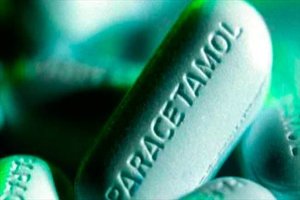- Home
- Editorial
- News
- Practice Guidelines
- Anesthesiology Guidelines
- Cancer Guidelines
- Cardiac Sciences Guidelines
- Critical Care Guidelines
- Dentistry Guidelines
- Dermatology Guidelines
- Diabetes and Endo Guidelines
- Diagnostics Guidelines
- ENT Guidelines
- Featured Practice Guidelines
- Gastroenterology Guidelines
- Geriatrics Guidelines
- Medicine Guidelines
- Nephrology Guidelines
- Neurosciences Guidelines
- Obs and Gynae Guidelines
- Ophthalmology Guidelines
- Orthopaedics Guidelines
- Paediatrics Guidelines
- Psychiatry Guidelines
- Pulmonology Guidelines
- Radiology Guidelines
- Surgery Guidelines
- Urology Guidelines
Paracetamol and liver damage: Study

Scientists have shed new light on how the common painkiller paracetamol causes liver damage.
Their findings may offer valuable insights into poisoning caused by an excess dose, which can be difficult to treat and may prove fatal.
The discovery could inform research into therapies to counteract harm caused by the drug, which is the leading cause of acute liver failure in the Western world.
Scientists at the University of Edinburgh studied the impact of paracetamol on liver cells in human and mouse tissue, and tests showed that in certain settings paracetamol can damage the liver by harming vital structural connections between adjacent cells in the organ.
When these cell wall connections known as tight junctions are disrupted, the liver tissue structure is damaged, cells are unable to function properly and they may die.
This type of cell damage is known to occur in liver conditions including hepatitis, cirrhosis, and cancer, but until now it was not linked to paracetamol toxicity.
Researchers aim now to develop a reliable method of using human liver cells as an alternative to animal testing. They then will seek to examine how varying paracetamol doses and timescales affect toxicity in the liver, and identify potential targets for new drugs.
The study, involving researchers from the Universities of Edinburgh and Oslo and the Scottish National Blood Transfusion Service, was published in Scientific Reports. It was supported in part by the Biotechnology and Biological Sciences Research Council and the Chief Scientist Office.
Dr Leonard Nelson, of the University of Edinburgh's Hepatology Laboratory and Institute for Bioengineering, who co-led the study, said: "Paracetamol is the world's preferred pain remedy it is cheap, and considered safe and effective at therapeutic dose. However, drug-induced liver damage remains an important clinical problem and a challenge for developing safer drugs. Our findings reinforce the need for vigilance in paracetamol use, and could help discover how harm caused by its adverse use might be prevented."
Co-author Pierre Bagnaninchi, of the University's MRC Centre for Regenerative Medicine, said: "Although liver damage caused by paracetamol toxicity has been the subject of intense study for 40 years, recent developments in biosensor technology are enabling a fuller picture of the biological mechanisms involved."
You can read the full Article by clicking on the link :
Wesam Gamal, Philipp Treskes, Kay Samuel, Gareth J. Sullivan, Richard Siller, Vlastimil Srsen, Katie Morgan, Anna Bryans, Ada Kozlowska, Andreas Koulovasilopoulos, Ian Underwood, Stewart Smith, Jorge del-Pozo, Sharon Moss, Alexandra Inés Thompson, Neil C. Henderson, Peter C. Hayes, John N. Plevris, Pierre-Olivier Bagnaninchi, Leonard J. Nelson. Low-dose acetaminophen induces early disruption of cell-cell tight junctions in human hepatic cells and mouse liver. Scientific Reports, 2017; 7: 37541 DOI: 10.1038/srep37541

Disclaimer: This site is primarily intended for healthcare professionals. Any content/information on this website does not replace the advice of medical and/or health professionals and should not be construed as medical/diagnostic advice/endorsement or prescription. Use of this site is subject to our terms of use, privacy policy, advertisement policy. © 2020 Minerva Medical Treatment Pvt Ltd